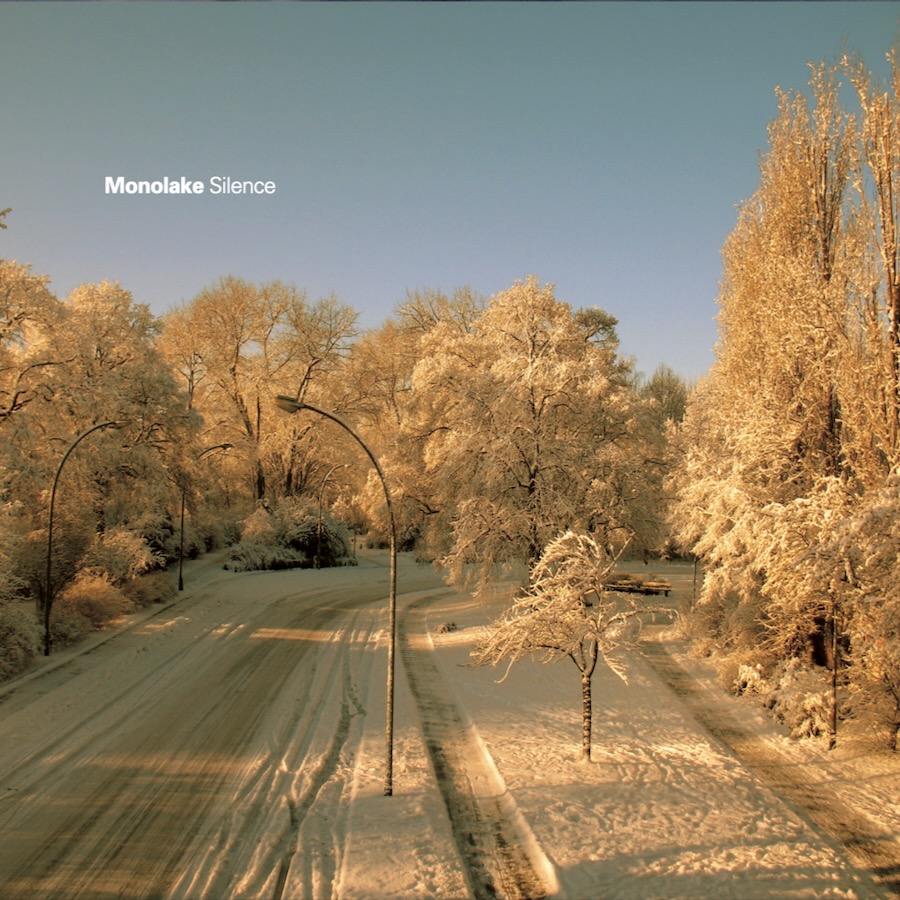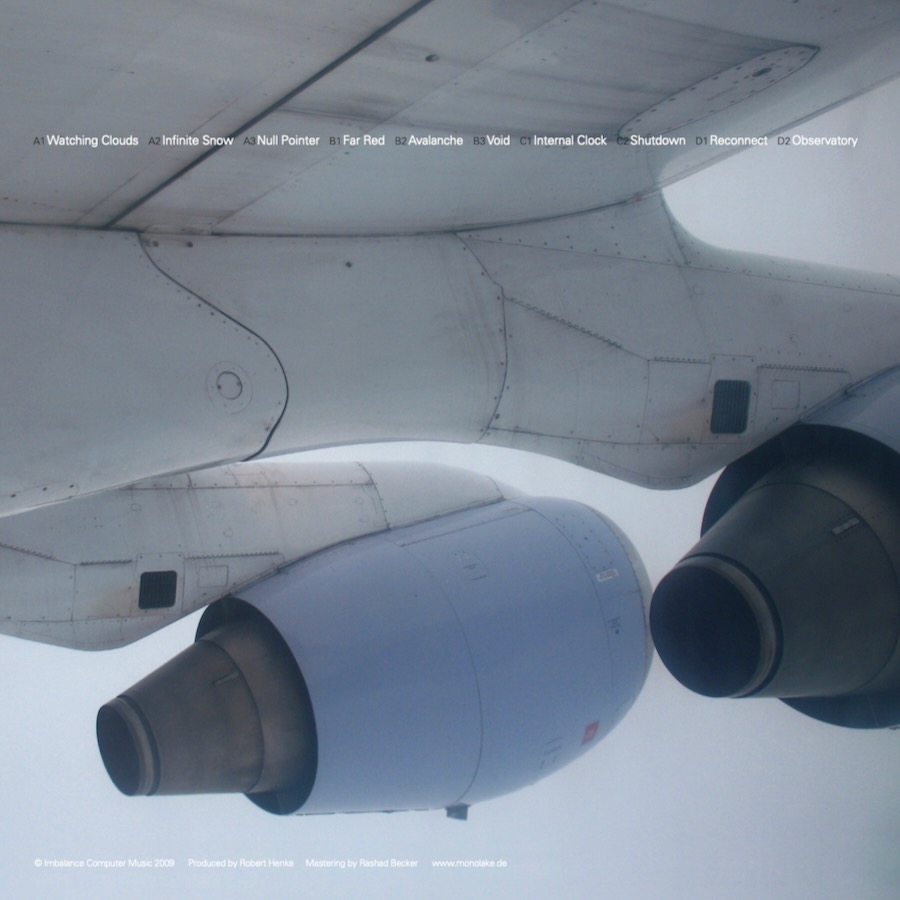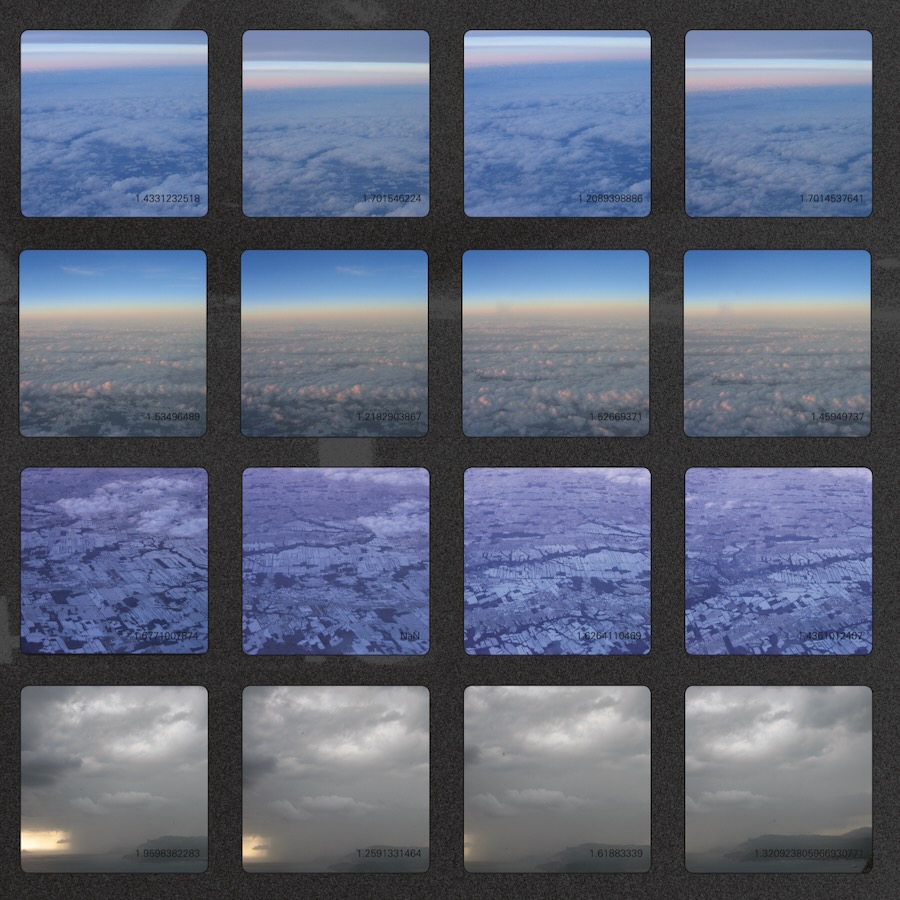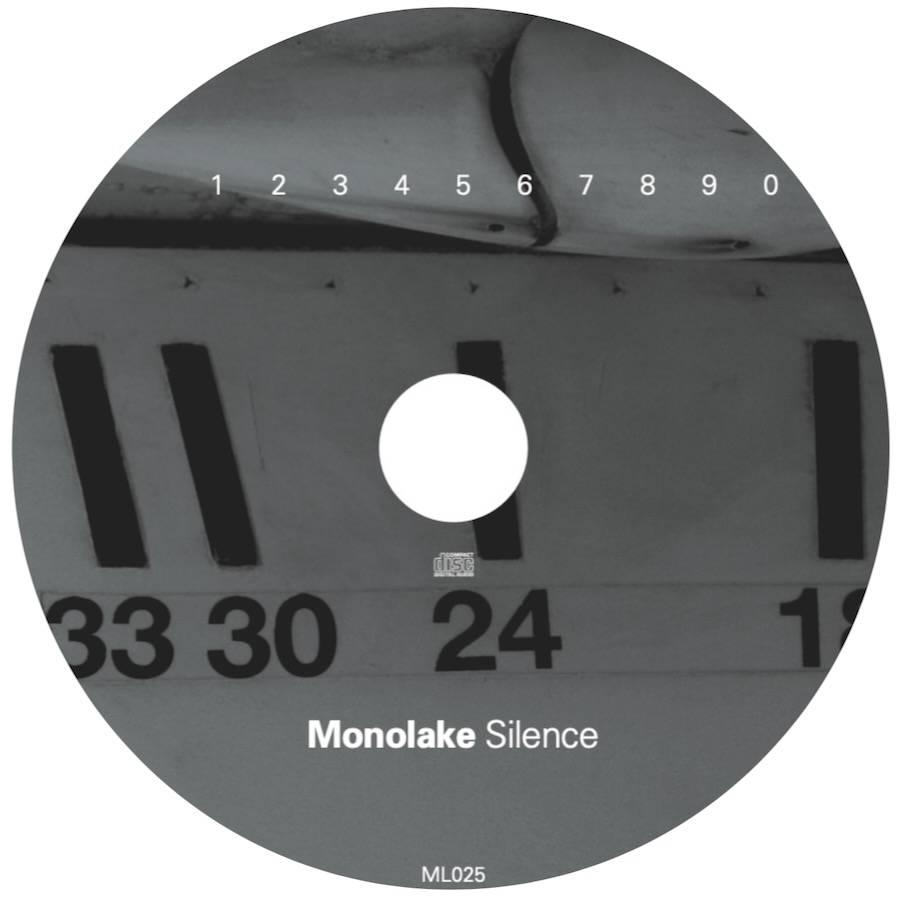Monolake - Silence
Earlier today they moved the racks over to the old engine room. We need more space for LAPS VII, the last parts arrived a few days ago. Everyone is in a good mood now, even the guy from the mechanics team. I took the chance to leave the station for the first time since when? The mountains made me feel light, happy and small, I stood at the north barrier for an infinite time watching the sun slowly painting shadowy landscapes, in total silence.

2009 | imbalance | ML 025
A1 - 1 Watching Clouds [listen] 5:19
A2 - 2 Infinite Snow [listen] 6:10
A3 - 3 Null Pointer [listen] 4:43
B1 - 4 Far Red [listen] 6:05
B2 - 5 Avalanche [listen] 6:30
B3 - 6 Void [listen] 3:29
C1 - 7 Internal Clock [listen] 8:15
C2 - 8 Shutdown [listen] 6:33
D1 - 9 Reconnect [listen] 5:52
D2 - 10 Observatory [listen] 8:36
Total running time: 61:06
Composed by Robert Henke November 2008 - September 2009
Formats: digital, CD, double vinyl LP
Buy at Hardwax

This morning I found a note on the fridge door: 'Selling longboard and a cabin near the beach! LOL!'; someone added: 'Idiot' to it.
Currently there is a lot of tension here, rumors spreading about a severe safety issue. If you'd ask me, it is definitely not a good idea to roll back now since we are so close.
I just wish it would stop raining.
Sometimes I wonder if they were creating all this a long long time ago with us in mind or if it is just one of these strange coincidences. Unlike Miller I tend to be a more down to earth person, besides occasional moments of doubt that everyone must experience here at some point, especially in those long dark winter nights. We are all getting a bit irrational from time to time.

The storm is finally over, the sky wild and exhausted. We went up to the observatory and the gods were with us. They gave us the most beautiful rainbow i've ever seen.
I closed my eyes and cried.
production notes

Sound sources include recordings of airport announcements, hammering on metal plates at the former Kabelwerk Oberspree, Berlin, sounds captured inside the large radio antenna dome at Teufelsberg, Berlin, dripping water at the Botanical Garden Florence, air condition systems and turbines in Las Vegas, Frankfurt and Tokyo, walking on rocks in Joshua Tree National Park, wind from the Grand Canyon, a friend's answering machine, a printer, conversations via mobile phones, typing on an old Macintosh keyboard and recordings from tunnel works in Switzerland.
Synthetic sounds created with the software instruments Operator, Tension, Analog and the built-in effects inside Ableton Live. Additional sound design and sequencing using Max/MSP and MaxForLive. Additional reverb: various impulse responses via Altiverb. Composed, edited and mixed in Live with a pair of Genelec 8040s. Field recordings captured with a Sony PCM D-50.
About the different formats: The CD release is my ideal version, with its crossfades between some of the tracks. For the download versions, those overlapps were removed to support random playback or the purchase of single tracks from the album (even while this release is really meant to be one single entity!). The vinyl version also adds its typical artefacts which I quite like: It sounds slightly more distorted and punchy in a nice way.
credit
Mastering by Rashad Becker. Design by snc based on photos by Robert Henke.